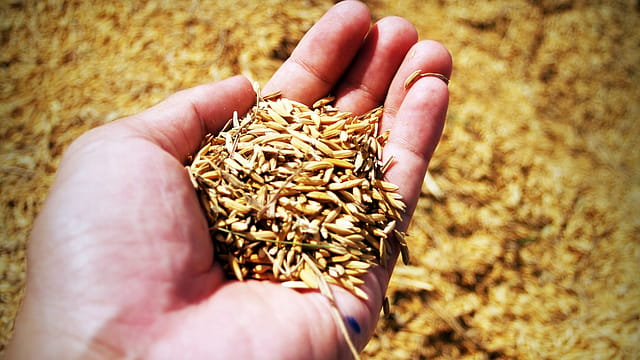Who wants economic freedom in India?
ADVERTISEMENT

The real loser of India’s just concluded state elections has been the idea of the free markets – that idea upon which since 1991 the country has pulled out more than 130 million out of poverty.
Ironically, the Congress Party, whose ‘suit-boot-ki-sarkar’ quip stalled much needed land reforms, has been the beneficiary of mass unrest on the lack of high paying jobs. Its victories in the state elections of Rajasthan, Madhya Pradesh and Chhattisgarh has been on the back of anger on the lack of well-paying jobs. The rising tide of expectations in a growing India, and Prime Minister Narendra Modi’s promise of ‘acche din’ (happy days), was translated literally as more money in their pocket by millions of Indians yearning to move up the economic ladder. The Employees Provident Fund Organisation spoke of the creation of three million new jobs in May 2018 but while some jobs are being created, they are not enough, and perhaps don’t pay as much as many Indians expect to get paid. This mismatch of expectations versus reality would be difficult for any government to fix – especially with the abysmal levels of skills generation and education. The ministry of skill development and entrepreneurship has struggled to achieve its goals.
Reforms like the Goods and Service Tax and the Aadhar-driven digital ecosystem is fuelling formalisation which is cutting regulatory cholesterol and creating jobs, but this is a long-term process with political economy challenges at every step from vested interests. Even the widespread of infrastructure building – in terms of roads, toilets, airports and electricity – and distribution of LPG cylinders cannot compensate for in-pocket income.
January 2026
Netflix, which has been in India for a decade, has successfully struck a balance between high-class premium content and pricing that attracts a range of customers. Find out how the U.S. streaming giant evolved in India, plus an exclusive interview with CEO Ted Sarandos. Also read about the Best Investments for 2026, and how rising growth and easing inflation will come in handy for finance minister Nirmala Sitharaman as she prepares Budget 2026.
Two examples stand out from the results of the state elections that defeat the hard-won gains of the free markets argument – and both go beyond the failings of Modi’s Bharatiya Janata Party (BJP) or its main rival, the Congress, which has promised millions of rupees in handouts to win the elections.
The first example is the sweeping victory of the Telengana’s Rythu Bandhu, the farmer scheme that gave ₹8,000, in two equal instalments, per acre as crop investment to farmers, and before the elections promised a hike to ₹10,000. The Telangana Rashtra Samithi government swept the elections crushing a multi-member opposition alliance and the BJP – even though in the long run this kind of handout does not solve the key issues that plague Indian agriculture. For instance, a study by the Rythu Swarajya Vedika, a farmer’s collective, and the Tata Institute of Social Sciences (TISS) earlier this year showed that 92.5% of the farmers who committed suicide in Telangana were small or marginal farmers or they were landless. Marginal holdings (of less than one hectare) amounted to 62% of all farmer holdings. Around 85% of farm land holdings in India which is set to rise to 91% by 2030, according to government statistics, but any talk of land consolidation using commercial companies is hara-kiri in Indian politics.
Telangana is far from alone in this kind of handout. Uttar Pradesh has spent around ₹21,000 crores ($3.3 billion) after a landslide victory for the BJP in 2017. The party had made this loan waiver a key campaign promise. In Karnataka, where the Janata Dal United and the Congress rule in an alliance, ₹44,000 crores have been spent on a loan waiver since coming to power by beating the BJP earlier this year. All this after the Congress-led government in 2008 rolled out a Rs. 60,000 crore loan waiver for farmers – but there is no end to the number of waivers, all fuelled by tax money.
But as economist and former chief of the Reserve Bank of India Raghuram Rajan, and indeed many other economists, have pointed out, such waivers do not help farmers in the long-run – they just distort the market. Indian agriculture suffers from a distortion in market connect that has proved impossible to solve as farmer lobbies run by wealthy landowning farmers have grown ever stronger – while most impoverished farmers, who form the majority, have grown ever more desperate leading to several long marches to the capital.
There is talk now that more sops are might be coming up from Modi – fuelled by the loss in the state elections – and India might land up spending up to one per cent or more of GDP in just farm loan waivers and sops between 2014-2019.
If you think this kind of market distortion is limited only to farmers, you would be wrong. Here’s another example from another party that swept the polls in the northeastern state of Mizoram, the Mizo National Front (MNF). Backed by the church in a Christian majority state, it campaigned against the ruling Congress which had removed a prohibition on alcohol much against the wishes of the church.
It is now set to reintroduce prohibition despite all evidence that prohibition does not work and at a cost of ₹70 crores – a significant amount in a state of only around 1.1 million people.
The opening of the markets lifted millions from poverty in India since 1991 – pity it failed to open many minds.
